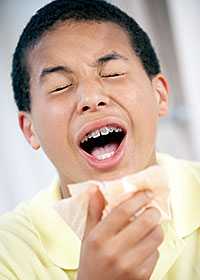Transmission
 Human parainfluenza viruses (HPIVs) usually spread from an infected person to others through—
Human parainfluenza viruses (HPIVs) usually spread from an infected person to others through—
- the air by coughing and sneezing,
- close personal contact, such as touching or shaking hands, and
- touching objects or surfaces that have HPIVs on them then touching your mouth, nose, or eyes.
HPIVs can stay in the air for over an hour and on surfaces for a few hours and still infect people depending on the environmental conditions.
People usually get HPIV infections in the spring, summer, and fall. For more information, see HPIV Seasons.
Top of PageRelated Page
- Page last reviewed: August 18, 2015
- Page last updated: August 18, 2015
- Content source:


 ShareCompartir
ShareCompartir